Single Amino Acid Change Underlies Distinct Roles of H2A.Z Subtypes in Human Syndrome
- PMID: 31491386
- PMCID: PMC7103420
- DOI: 10.1016/j.cell.2019.08.002
Single Amino Acid Change Underlies Distinct Roles of H2A.Z Subtypes in Human Syndrome
Abstract
The developmental disorder Floating-Harbor syndrome (FHS) is caused by heterozygous truncating mutations in SRCAP, a gene encoding a chromatin remodeler mediating incorporation of histone variant H2A.Z. Here, we demonstrate that FHS-associated mutations result in loss of SRCAP nuclear localization, alter neural crest gene programs in human in vitro models and Xenopus embryos, and cause craniofacial defects. These defects are mediated by one of two H2A.Z subtypes, H2A.Z.2, whose knockdown mimics and whose overexpression rescues the FHS phenotype. Selective rescue by H2A.Z.2 is conferred by one of the three amino acid differences between the H2A.Z subtypes, S38/T38. We further show that H2A.Z.1 and H2A.Z.2 genomic occupancy patterns are qualitatively similar, but quantitatively distinct, and H2A.Z.2 incorporation at AT-rich enhancers and expression of their associated genes are both sensitized to SRCAP truncations. Altogether, our results illuminate the mechanism underlying a human syndrome and uncover selective functions of H2A.Z subtypes during development.
Keywords: H2A.Z; SRCAP; chromatin remodeler; craniofacial; enhancers; epigenetics; genetic mutation; histone variant; human disorder; neural crest.
Copyright © 2019 Elsevier Inc. All rights reserved.
Conflict of interest statement
Declaration of Interests
The authors declare no competing interests.
Figures
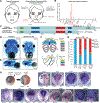

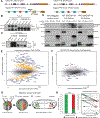
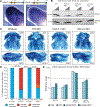
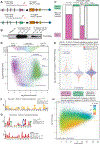
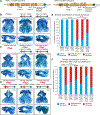
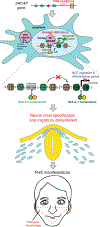
Comment in
-
The Face of Chromatin Variants.Cell. 2019 Sep 5;178(6):1284-1286. doi: 10.1016/j.cell.2019.08.024. Cell. 2019. PMID: 31491382
Similar articles
-
When chromatin organisation floats astray: the Srcap gene and Floating-Harbor syndrome.J Med Genet. 2016 Dec;53(12):793-797. doi: 10.1136/jmedgenet-2016-103842. Epub 2016 Apr 26. J Med Genet. 2016. PMID: 27208210 Review.
-
The ATPase SRCAP is associated with the mitotic apparatus, uncovering novel molecular aspects of Floating-Harbor syndrome.BMC Biol. 2021 Sep 2;19(1):184. doi: 10.1186/s12915-021-01109-x. BMC Biol. 2021. PMID: 34474679 Free PMC article.
-
Mutations in SRCAP, encoding SNF2-related CREBBP activator protein, cause Floating-Harbor syndrome.Am J Hum Genet. 2012 Feb 10;90(2):308-13. doi: 10.1016/j.ajhg.2011.12.001. Epub 2012 Jan 19. Am J Hum Genet. 2012. PMID: 22265015 Free PMC article.
-
Not all floating-harbor syndrome cases are due to mutations in exon 34 of SRCAP.Hum Mutat. 2013 Jan;34(1):88-92. doi: 10.1002/humu.22216. Epub 2012 Oct 16. Hum Mutat. 2013. PMID: 22965468
-
Variation on a theme: Evolutionary strategies for H2A.Z exchange by SWR1-type remodelers.Curr Opin Cell Biol. 2021 Jun;70:1-9. doi: 10.1016/j.ceb.2020.10.014. Epub 2020 Nov 17. Curr Opin Cell Biol. 2021. PMID: 33217681 Review.
Cited by
-
E2F and STAT3 provide transcriptional synergy for histone variant H2AZ activation to sustain glioblastoma chromatin accessibility and tumorigenicity.Cell Death Differ. 2022 Jul;29(7):1379-1394. doi: 10.1038/s41418-021-00926-5. Epub 2022 Jan 20. Cell Death Differ. 2022. PMID: 35058574 Free PMC article.
-
Identification of chromatin states during zebrafish gastrulation using CUT&RUN and CUT&Tag.Dev Dyn. 2022 Apr;251(4):729-742. doi: 10.1002/dvdy.430. Epub 2021 Oct 23. Dev Dyn. 2022. PMID: 34647658 Free PMC article.
-
The Role of the Histone Variant H2A.Z in Metazoan Development.J Dev Biol. 2022 Jul 1;10(3):28. doi: 10.3390/jdb10030028. J Dev Biol. 2022. PMID: 35893123 Free PMC article. Review.
-
Integrated analysis of H2A.Z isoforms function reveals a complex interplay in gene regulation.Elife. 2020 Feb 28;9:e53375. doi: 10.7554/eLife.53375. Elife. 2020. PMID: 32109204 Free PMC article.
-
Analysis of histone variant constraint and tissue expression suggests five potential novel human disease genes: H2AFY2, H2AFZ, H2AFY, H2AFV, H1F0.Hum Genet. 2022 Aug;141(8):1409-1421. doi: 10.1007/s00439-022-02432-1. Epub 2022 Jan 24. Hum Genet. 2022. PMID: 35072799
References
-
- Alexa A & Rahnenfuhrer J, 2018. topGO: Enrichment Analysis for Gene Ontology. R package version 2.34.0.
Publication types
MeSH terms
Substances
Supplementary concepts
Grants and funding
LinkOut - more resources
Full Text Sources
Other Literature Sources
Medical
Molecular Biology Databases
Research Materials

